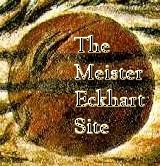|
|
||
 |
Meister Eckhart Home / Works by Meister Eckhart - Quotes / Inspired by Eckhart / Studies / The Papal Condemnation / Mail & Announcements / Links / Books |
M. LAISTNER
Knowledge of Greek in Western Europe during the earlier Middle Ages
Chapter 10 (The Study of Greek) of Laistner's, Thought & Letters in Western Europe - A.D. 500 to 900, N.Y. 1931, pp. 238-250
Page 4
It must be remembered that even now manuscripts written in uncials between the fifth and the seventh century survive which contain the Psalter or parts of the New Testament in both Greek and Latin. Such were the Laudian Acts used by Bede or the codex Bezae, and, when the Carolingian renaissance got under way, no doubt more of these venerable tomes existed than now. They would be useful for teaching the elements of Greek; indeed, one extant Psalter evidently served this purpose.[6] At St Gall there were certainly unusual facilities for absorbing at least a beginner's knowledge of Greek; nor is it unlikely that the elementary stages, consisting of learning the alphabet and some portions of the liturgy, were mastered by a few of the brethren. The presence of Irish monks there in the eighth and ninth centuries, and the evidence of extant St Gall manuscripts written by Irish scribes, show whence came the attention given to this language. Among surviving Sangallenses are two bilingual Psalters and a fine volume containing the Gospels in Greek and Latin.[7] In others we find portions of the Greek liturgy, but too much must not be made of this evidence. Parts of the liturgy in Greek were used on certain stated occasions in several western European centres and even included in the Roman rite. Greek versions of the Creed, Lord's Prayer, the Gloria, or Kyrie eleison, sometimes written in Greek, sometimes transliterated into Latin characters, are not uncommon in Western manuscripts. A later ninth-century codex containing the Paternoster in both languages is a book of Tours, while on one page of a Reichenau manuscript the Gloria has been inscribed with an interlinear Latin rendering. A Harleian manuscript (5642) contains the Gloria and Sanctus partly in Latin, partly in Greek characters, while one from St Denis has the Gloria and Credo in the two languages.[8] Copyists in scriptoria were often familiar with the Greek alphabet and it is nothing uncommon to find Greek capitals used in writing the abbreviation of Jesus Christus. Or again, one finds Latin phrases, like Deo gratias amen or Deo gratias semper, but written in Greek characters, or even Greek invocations, like "Pity me", "Help me", "Save me".[9] Sometimes Greek words in a Latin Patristic author are glossed in the margin with a Latin translation, as for example in Jerome's commentaries on Isaiah (Sangall., 113-15) and on Ezekiel (Sangall., 117-18). Finally a good many bilingual glossaries and phrasebooks copied in the ninth century or later have come down to us, though the material that they contain is usually much older.